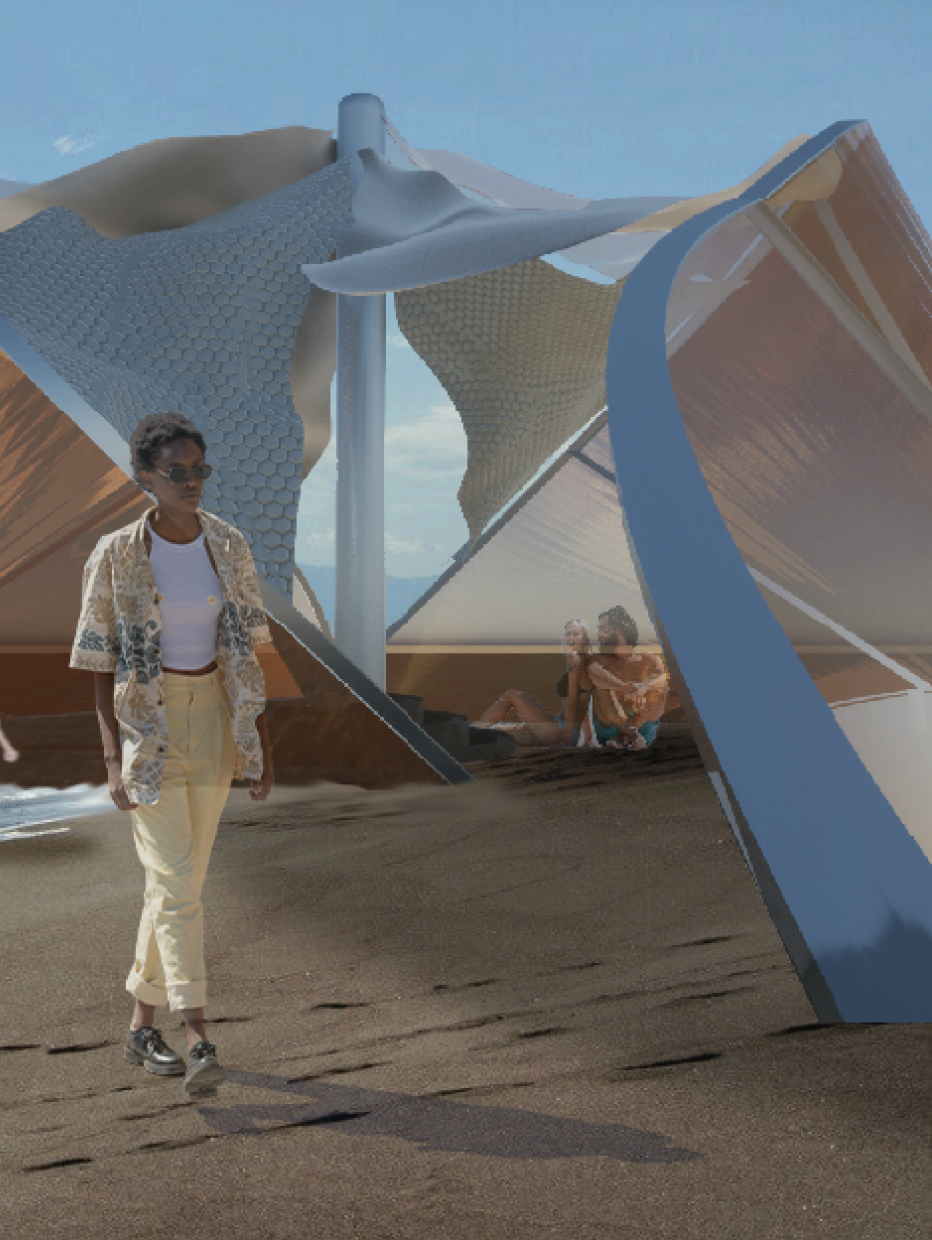Icarus

Category
Daylight investigations - Region 1: Western Europe.
Students
Emma BODIN
Yann PINEAU
Lola BESSON
Sibylle BLANCHET
School
L'École de Design Nantes Atlantique
Country
France
Download
Download ↓
Architecture has always drawn inspiration from the environment in which it was built, evidently, taking into account daylight. The architectural environment surrounding us every day, perennial or ephemeral, aims to know and understand this light better in order to design spaces giving importance to it.
It is this daylight which synchronizes our days and allows our bodies to follow our circadian rhythm, thus enabling the body to signal cortisol secretion (the hormone of positive stress) creating a good mood as well as reinforcing our immune defences by signalling the creation of vitamin D. Therefore, it can be concluded that exposing skin to the sun brings lots of advantages for our health. However, poorly controlled sun exposure leads to huge impacts because of ultraviolet rays.
Indeed, in 2022, Earth is going through a 1.5 degrees increase in global warming due to greenhouse gases. Undoubtedly, the sun produces light but also heat coming from UV rays which can be separated into three categories. These are known as UVC, UVB and UVA rays: UVC rays are filtered by the atmosphere, UVB rays are responsible for suntans and burns as well as UVA rays are responsible for skin ageing, the formation of wrinkles and the development of skin cancers.
Additionally, it is the two hours after the solar noon where UV rays are the most dangerous because of the sun’s trajectory. Moreover, it is on the beach during summer, where the sun is at its highest on the solstice line (at the zenith), that it becomes uncompromising. The rays’ reverberation on water (10%) and sand (15%) makes it a sunbathing enemy which we must protect.
Icarus is a concept we designed to allow people to enjoy the benefits of the daylight on the beach while avoiding risks associated with UV rays overexposure.This microarchitecture takes place straight on the beach and offers a space with light and shadow, allowing younger ones to play around and older ones to chill out and wander into this space, limiting UV rays.
Conceptualised according to its environment, Icarus is 8-meter diameter and it appears as a washed-up shell on the beach. It is composed of two large asymmetric curves shaped like waves, precisely placed on the sun’s trajectory. These are made of orange-tinted G38 anti-UV glass, obstructing 72% of light and, ultimately, UV rays. During the installation of Icarus, one of the 2 curves must face south in order to maximally protect people from the sun which is following its trajectory and so the lines of the microarchitecture.
In the middle, a 4-meter wooden mast is standing and from this openwork, shade sails fan out made of various fabrics: sail cloths, sails made from natural fabrics’ or clear films in orange shades. Finally, a terra cotta gutter is set in a spiral into the sand. During tides, water goes in and creates a playground-like area for children to cool down whilst having fun.
So Icarus is a microarchitecture which perfectly integrates the beach environment and aesthetic through its shape and its materials. It creates a meeting place where UV rays are out of reach. It becomes like a large sandcastle welcoming the imagination of the younger ones and the serenity of the older ones.

































